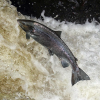Peter A. Rinck
European Magnetic Resonance Forum (EMRF) Foundation, WTC, BP 255, F-06905 Sophia Antipolis Cedex, France
In 1946, two scientists in the United States, independently of each other, described a physicochemical phenomenon that was based upon the magnetic properties of certain nuclei in the periodic system. This was “nuclear magnetic resonance”, for short “NMR”. The two scientists, Felix Bloch and Edward M. Purcell were awarded the Nobel Prize in Physics in 1952.
Purcell worked at the Massachusetts Institute of Technology, MIT, and later joined the faculty of Harvard University. Bloch, a Swiss national, taught at the University of Leipzig until 1933; he then moved to the United States and joined the faculty of Stanford University at Palo Alto in 1934. In 1962 he became the first director of CERN in Geneva. Bloch was a protagonist for the interaction between Europe and the United States. NMR and magnetic resonance imaging (MRI) would not exist without this interaction.
Bloch and Purcell were not the only scientists working in the field. Already in 1924, Wolfgang Pauli suggested the possibility of an intrinsic nuclear spin. The year after, George Eugene Uhlenbeck and Samuel A. Goudsmit introduced the concept of the spinning electron. Two years later Pauli and Charles Galton Darwin developed a theoretical framework for grafting the concept of electron spin into the new quantum mechanics developed the year before by Edwin Schrödinger and Werner Heisenberg.
This development continued in the 1930s. After their initial pace-making work at the University of Frankfurt’s Institute for Theoretical Physics, Otto Stern and Walther Gerlach in 1933 were able to measure the effect of the nuclear spin by deflection of a beam of hydrogen molecules. During the early 1930s, Isidor Isaac Rabi’s laboratory at Columbia University in New York became a major centre for related studies.
Rabi’s research was successful, but only the visit by Cornelis Jacobus Gorter from the Netherlands in September 1937 finally showed how to measure the nuclear magnetic moment. Gorter had tried similar experiments and failed. Rabi accepted and realised Gorter’s suggestions concerning his experiments, changed them, and was able to observe resonance experimentally. This led to the publication (in Physical Review) of “A New Method of Measuring Nuclear Magnetic Moment” in 1938. Gorter first used the term “nuclear magnetic resonance” in a publication, which appeared in the war-torn Netherlands in 1942, attributing the coining of the phrase to Rabi.
Electron spin resonance was discovered at Kazan University by Yevgeni K. Zavoisky towards the end of the war. Zavoisky had first attempted to detect NMR in 1941, but like Gorter he had failed.
After the final breakthrough by Bloch and Purcell, NMR developed across a wide range of applications. Hardly any of them were medical, although in vivo NMR already had been performed since the early 1950s. In 1955/1956, Erik Odeblad and Gunnar Lindström from Stockholm published their first NMR studies of living cells and excised animal tissue, including relaxation time measurements. Odeblad continued working on tissues throughout the 1950s and 1960s. He is the major early contributor to NMR in medicine.
Oleg Jardetzky and colleagues, at the Stanford University Medical Center, performed sodium NMR studies in blood, plasma and red blood cells in 1956. T1 and T2 relaxation time measurements of living frog skeletal muscle were published by Bratton and colleagues in 1965. In the 1960s and 1970s a very large amount of work was published on relaxation, diffusion and chemical exchange of water in cells and tissues of all sorts. In 1967, Ligon at Oklahoma State University reported the measurement of NMR relaxation of water in the arms of living human subjects. In 1968, Jackson and Langham of the University of California, Los Alamos Scientific Laboratory, Los Alamos, New Mexico, published the first NMR signals from a living animal.
In the late 1960s, Jim Hutchison at the University of Aberdeen in Scotland began working with magnetic resonance on in vivo electron spin resonance studies in mice. Hazlewood from Baylor College of Medicine, Houston, Texas, added to the work on relaxation time measurements by studying developing muscle tissue. Cooke and Wien from the University of California at San Francisco and Stanford University worked on similar topics. Hansen from the Procter and Gamble Company, Cincinnati, Ohio, added NMR studies of brain tissue. Others joined in this kind of research, among the better known being the research groups of Raymond Damadian at Downstate Medical Center in Brooklyn and Donald P. Hollis at Johns Hopkins University in Baltimore. Damadian’s group measured T1 and T2 relaxation times of excised normal and cancerous rat tissue and stated that tumorous tissue had longer relaxation times than normal tissue. Hollis and his collaborators achieved similar results, but were more balanced and scientifically critical in their postulations and deductions. Damadian wrongly thought that he had discovered the ultimate technology to detect cancer and, in 1972, filed a patent claim for an Apparatus and Method for Detecting Cancer in Tissue. The patent included the idea but no description of a method or technique of using NMR to scan, but not to image, the human body. In February 1973 Abe and his colleagues at the University Hokkaido in Sapporo applied for a patent on a targeted NMR scanner. They published this technique in 1974.
Actual in vivo NMR spectroscopy took off in Oxford from 1974, with the group of Rex E. Richards and George K. Radda. Among others, David Hoult and David G. Gadian belonged to this group.




